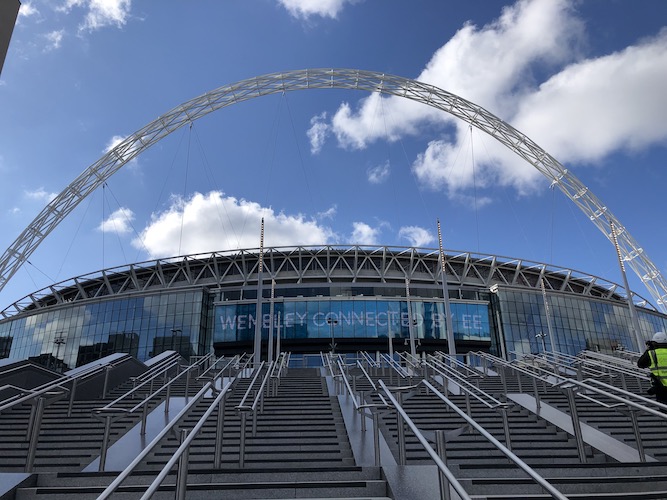In a previous life I wrote quite a lot about football, especially as a sort of metaphor for the state of the nation and so on. I ruined the build-up to Wednesday’s semi-final for the young people of my household by boring on about the wretched reputation of the English game in the late 1980s and how its rehabilitation began at Italia 90 (I reported from both the 1988 Euros in Germany, where many England fans behaved like pigs, and that glamorous and mostly glorious World Cup two years later). Inevitably, my inner pop sociologist has re-emerged in recent weeks in a Londoncentric form.
The London of my small town childhood imagination was largely formed by major sporting events. I was eight when England won the World Cup in 1966 and experienced the tournament entirely through black-and-white television in my parents’ house. But I recall being beguiled by images of players waving at fans from the balcony of the Royal Garden Hotel on Kensington High Street and people celebrating in the fountains of Trafalgar Square. Football helped instil at an early age that sense of the city being where gatherings and dramatic spectacles with deep national meaning happen.
The 1966 World Cup gave me London landmarks which inform my relationship with the capital to this day: I cannot think of Upper Norwood without also thinking of a dog called Pickles; Dagenham’s Becontree estate is rightly famous for its pioneering housing, but for me it is also unbreakably linked with England’s manager Alf Ramsey, who grew up there (as did one of his successors, Terry Venables); and, of course, there’s Wembley Stadium. Its legendary twin towers version, built in 1923 on the site of an unfinished rival to the Eiffel Tower and Grade II-listed in 1976, is long-demolished. Yet its name, location and associations have ensured it remains embedded in the London histories of millions.
This summer’s football dramas, especially in the context of the pandemic, mean the stadium’s newer incarnation has gathered something of the same mystique as the old one. Who now looks back at the £300-plus million over-spend on delivering the Populous-Norman Foster grand design, completed, late, in 2007, and thinks it wasn’t worth the money? The new steps up to the stadium, unveiled in April, both consolidate Wembley’s links with London’s (and England’s) past – a past that encompasses the post-war Olympics – and form a new part of its present and future, just as the arch above it does.
Like the one of 1966, the current group of England players is drawn from clubs all over the country, London included, as well as Spain and also – something unthinkable 55 years ago – from Germany. Also like 1966, its captain plays for a London club. And a brightly-shining piece of the mosaic of romance that has already formed around this tournament, no matter what happens on Sunday, is the personal story of Raheem Sterling, the dazzling England star who, in the reverse of the usual pattern, left London to make his fortune in the north. He was born in Jamaica but brought up in Brent, very close to the ground. It’s silly, but when he zips across the Wembley turf I can’t help thinking to myself, he’s come home.
This article is a slightly extended version of an item from last week’s On London Extra newsletter sent to this website’s 250+ supporters. Become one for £1 or so a week. Details here.
